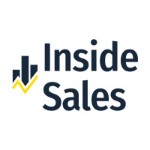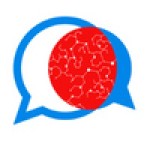Ah, the intricate world of the sales call! We’ve all been there—those nerve-wracking meetings where, despite all our preparations, we find ourselves talking at the prospect rather than engaging in a meaningful dialogue with them. We’ve laid out what we believe to be the perfect solution, presenting every feature and benefit, and yet, there’s a palpable disconnect. You see the blank stares, the quick glances exchanged between sales team, members, and the incessant tapping of a pen on the table. Why does this happen? Often, it’s because we’ve missed a crucial step in the sales process: understanding our prospect’s real needs and desires.
Now, I know what you might be thinking. “I’ve done my homework. I know my target audience.” And while that might be true, there’s a distinct difference between understanding an audience in general and truly grasping the unique challenges and aspirations of an individual or a company. This is where sales discovery questions come into play.
Sales discovery questions are essential tools that help sales professionals dig deeper into the needs and desires of their prospects. By asking the right questions, you can better see potential customers and tailor your solutions to fit their unique challenges.
Imagine if Sherlock Holmes entered a crime scene and just assumed the cause without conducting his meticulous investigation. His success rate would plummet! Similarly, sales discovery questions are your investigation tools. They aren’t your run-of-the-mill queries. Instead, they’re purposefully crafted to dig deep, peeling back the layers of surface-level responses to reveal the core of what your prospect truly needs and desires.
Through sales discovery questions, you transition your sales rep from being a mere vendor pushing a product to prospective customer to becoming a trusted consultant, offering a valuable solution. This not only enhances the chances of closing the deal but also fosters long-term relationships. As we navigate through this post, you’ll come to see the immense power these questions hold, and how, with the right approach, they can revolutionize your sales strategy. So, ready your notebook and keen senses; it’s time to play detective in the dynamic landscape of sales!

The Importance of Sales Discovery Questions
At a first glance, sales discovery questions may seem like any other questions you ask during a meeting. However, their role and impact run much deeper than merely breaking the ice or gathering rudimentary information. These questions, when strategically implemented, can be a game changer for your sales process. Let’s delve deeper into their significance:
Understanding the Prospect’s Pain Points
The business landscape is filled with challenges—some evident, some hidden beneath the surface. Simply assuming or generalizing these pain points can lead to ineffective solutions. Sales discovery questions allow you to delve deep into the intricacies of a prospect’s business. They help you identify specific challenges, understand their origins, and gauge their impact. By getting to the heart of these issues, you can offer solutions that resonate and provide real value.
Tailor Your Solution
A one-size-fits-all approach rarely works in sales. Every business, regardless of how similar they might appear on the surface, has unique needs, goals, and operational dynamics. Sales discovery questions enable you to customize your sales pitch further, aligning it precisely with the prospect’s requirements. This not only enhances the relevancy of your offering but also showcases your dedication to providing bespoke solutions—a quality that can significantly elevate your brand’s perception.
Build Stronger Relationships
The act of asking deep, thoughtful questions of potential customer and actively listening to the responses fosters a sense of trust build rapport and mutual respect. It shows the prospect that you genuinely care about their challenges and are not just in the room to make a quick sale. Over time, this trust can blossom into a strong, enduring relationship, turning a mere prospect into a loyal customer and brand advocate. Moreover, in an era where personal connections are becoming increasingly crucial for business success, the ability to genuinely connect can set you apart from the competition.
Enhancing Sales Efficiency
Discovery questions streamline the sales process. By understanding the prospect’s needs early on the discovery call, you can efficiently guide them through the sales funnel, reducing the chances of objections, prolonged negotiations, or dropped deals. This not only optimizes the sales cycle but also boosts team morale, as they experience increased success rates on sales calls.
Uncovering Up-Sell or Cross-Sell Opportunities
A thorough discovery process can reveal areas where the prospect might benefit from additional products or services you offer. These opportunities might have remained hidden without the deep insights gained through targeted questions. As a result, great discovery calls from you not only address the prospect’s immediate needs but also provide added value, potentially increasing the deal size.
Key Points:
- Discovery questions reveal both evident and hidden challenges.
- Customized solutions lead to higher conversion rates.
- Building trust is paramount for long-term success.
- Efficient discovery can streamline the entire sales process.
- Potential for up-sell or cross-sell opportunities is unveiled.

Crafting the Perfect Discovery Question
Designing the right sales discovery calls and questions is both an art and a science. It’s not just about asking anything that comes to mind but about framing questions that dive deep, resonate with the prospect, and extract valuable insights. A well-crafted sales discovery call or question can be the difference between a productive conversation and a missed opportunity. So, how do you ensure your questions hit the mark every time? Let’s explore:
Be Open-ended
Closed-ended questions, which typically result in a simple ‘yes’ or ‘no’, can stifle the flow of information. On the other hand, open-ended questions, those that begin with “how,” “what,” “why,” or “describe,” encourage a more comprehensive response. They give the prospect room to express their thoughts, feelings, and concerns in detail, offering you a richer insight into their perspective.
Listen Actively
It’s not just about the questions you ask but also about how you listen. Active listening involves fully concentrating, understanding, and responding to what the other person is saying. This means not just hearing the words, but also picking up on the nuances and emotions behind them. It’s about being present in the conversation, showing empathy, and making the prospect feel truly heard. This not only helps you gather more accurate information but also strengthens the relationship by demonstrating genuine care.
Follow the ‘Five Whys’ Technique
Originating from the lean manufacturing process, this technique involves asking “why” five times successively to get to the root cause of a problem. While it doesn’t mean you literally ask “why” five times in a row, it emphasizes the importance of digging deeper. For example, if a prospect mentions a challenge, don’t just stop at understanding the surface issue. Delve into the underlying causes, effects, and implications. By the fifth “why,” you’ll often uncover the core problem, allowing for a more targeted solution.
Be Genuine and Curious
People can sense when they’re being interrogated versus when someone is genuinely interested in understanding their challenges. Approach the discovery process with genuine curiosity. This authenticity fosters trust and encourages prospects to open up more, sharing details they might otherwise hold back.
Avoid Leading Questions
It’s crucial to maintain neutrality in your questions. Leading questions subtly prompt the respondent to answer in a specific way, which might not reflect their true thoughts or feelings. Instead of asking, “Don’t you think we will find a solution that would be beneficial for this problem?”, pose a more neutral question like, “How do you feel our solution aligns with this challenge?”
Context Matters
Understand the context in which you’re posing the various questions to ask them. A CEO might have different insights compared to a front-line manager. Tailor your questions to the individual’s role, their challenges, and the context of the business situation.
Key Points:
- Open-ended questions drive richer discussions.
- The essence of a good discovery session lies in active listening.
- Delving deep into challenges uncovers the real pain points.
- Authenticity and neutrality in questioning are crucial for genuine insights.
- Tailoring questions to the individual and situation increases relevancy.

10 Essential Sales Discovery Questions
In the vast arena of sales, while every situation and prospect might require a unique approach, there are certain sales discovery call questions and questions that stand the test of time. These are the foundational queries that offer a good starting point, allowing for deeper dives into the unique intricacies of each prospect. Here’s a curated list of 10 essential sales and great discovery call questions and a brief exploration of why they’re so pivotal:
What challenges are you currently facing in your role or within your department?
This question is a broad opener, giving prospects an opportunity to share top-of-mind concerns. It not only reveals immediate pain point and points but also sets the stage for a deeper exploration of underlying issues.
How have you addressed these challenges in the past?
This question provides insights into the prospect’s mindset and past strategies. Were they effective? Did they use a competitor’s solution? Their answer can help you understand what didn’t work and position your prospect’s current solution, perhaps as a better alternative.
What are the implications of these challenges on your broader business objectives?
By understanding the ripple effect of a challenge, you grasp its true magnitude. This question also nudges the prospect to think about the larger picture, emphasizing the urgency of finding a solution.
What would the ideal solution look like for you?
Here, you’re allowing the prospect to paint a picture of their perfect world. Their description provides clues about features they value, outcomes they desire, and potentially even budget constraints they might have.
Are there any internal initiatives or shifts that might impact this challenge or its solution in the near future?
Businesses are dynamic, with ever-evolving priorities. This question helps you anticipate changes and ensures that the solution you propose remains relevant in the current process in face of upcoming shifts.
Who else in your organization feels the impact of these challenges?
Understanding the stakeholders gives you a sense of who else you might need to engage in the sales or purchase process. It can also reveal other departments or teams that might benefit from your solution.
How do you currently measure success in addressing these challenges?
Knowing their metrics and KPIs allows you to tailor your pitch more deals, highlighting how your solution aligns with their definitions of success.
What’s the timeframe you’re considering for implementing a solution?
This question provides clarity on the prospect’s urgency. Whether they’re looking for the right solution, an immediate fix or a long-term partnership with other solutions, you can adjust your sales strategy accordingly.
Have you considered solutions similar to ours before? If so, what was the outcome?
This is a delicate way of understanding your competition. Their response can reveal past experiences, objections they might have, and areas where your product demo or offering can stand out.
What’s the decision-making process like for initiatives like this?
Grasping the decision-making structure allows you to navigate the complexities of organizational hierarchies. It informs you about who holds the reins and how to best approach the closing stages.
Key Points:
- Begin with broad questions and gradually narrow down.
- Understand the prospect’s history and future plans.
- Gauge the scale and ripple effect of the challenges faced.
- Tailor your solution based on the prospect’s ideal scenario.
- Anticipate changes and understand decision-making hierarchies.

Software Tools to Aid the Discovery Process
In today’s digital age, it’s no surprise that technology has come to the aid of the sales discovery process. From simplifying information gathering to aiding in the analysis of the insights gained, software tools can offer an edge in understanding and engaging with your prospects. Here’s a dive into some notable tools that can elevate your discovery game:
HubSpot CRM
HubSpot isn’t just a robust CRM system; it’s also a treasure trove of features designed to enhance the discovery process. With its intuitive interface, you can log calls, notes, and meetings with prospects, ensuring you never lose track of any critical information. The system also offers analytics, allowing you to gain insights into prospect interactions, perfect for tailoring follow-up discussions.
Calendly
Before diving deep into discovery questions, you need to set up those crucial meetings. Calendly simplifies scheduling by allowing prospects to choose a suitable time based on your availability. This minimizes the back-and-forth often associated with coordinating meetings.
Zoom
In an era where remote meetings are becoming the norm, Zoom provides a seamless platform for video conferencing. The ability to share screens ensures that both you and your prospect can discuss details in real-time, fostering a more collaborative discovery session.
Otter.ai
This AI-powered tool transcribes meetings in real-time. For sales professionals, this means no longer needing to scribble down notes frantically. Instead, you can focus on the conversation, secure in the knowledge that all details are being captured accurately.
MindMeister
Visual representation often makes complex information more digestible. MindMeister allows you to create mind maps, helping in charting out challenges, solutions, and insights gathered during the discovery process. It’s a fantastic tool for both planning and reviewing discovery sessions.
Typeform
Sometimes, a preliminary survey can aid in guiding the direction of the discovery session. Typeform offers an engaging way to create surveys, gathering initial information about a prospect’s challenges, needs, and business landscape.
Looker
If your discovery process involves analyzing vast amounts of data (perhaps for industries like finance or e-commerce), Looker offers data exploration and actionable insights. This aids in understanding patterns, challenges, and opportunities within a prospect’s data landscape.
LinkedIn Sales Navigator:
This tool goes beyond the standard LinkedIn experience. It provides insights into company news, allows for lead tracking, and offers recommendations. It’s invaluable for understanding a prospect’s business environment and any recent shifts or challenges they might be experiencing.
Key Points:
- HubSpot CRM offers an all-in-one solution for logging and analyzing prospect interactions.
- Calendly and Zoom simplify the scheduling and execution of discovery meetings.
- Otter.ai and MindMeister enhance note-taking and visualization of insights.
- Tools like Typeform, Looker, and LinkedIn Sales Navigator provide preliminary insights and deeper data analysis to guide discovery sessions.

Frequently Asked Questions (FAQ)
1. Why are sales discovery questions so essential in the sales process?
Sales discovery questions are the bridge connecting a salesperson to a prospect’s genuine needs and challenges. They enable a tailored approach, ensuring that solutions offered by sales reps resonate deeply with the prospect’s unique situation. Without these questions, sales strategies risk being generic and misaligned with the prospect’s actual needs.
2. Can I use the same set of questions for every prospect?
While there’s a foundational set of questions that are generally applicable, it’s crucial to tailor your questions based on the prospect’s industry, role, and unique circumstances. A customized approach demonstrates genuine interest and often yields richer, more actionable insights.
3. How can I ensure I’m asking the right discovery questions?
Start with thorough research about the prospect and their industry. Understand their role, challenges, and objectives. This background knowledge will guide the formulation of insightful questions. Also, be open to adapting based on the flow of the conversation and the responses you receive.
4. What if a prospect is reluctant to answer discovery questions?
Building rapport and trust is essential. Ensure that the prospect understands the purpose behind each question and how it can benefit them. Being transparent about your intentions and showing genuine curiosity can often make prospects more comfortable sharing.
5. Are open-ended questions better than close-ended ones?
Open-ended questions usually provide more detailed insights, allowing prospects to share freely. However, there’s a place for close-ended questions, especially when seeking specific information or clarifications. Ideally, a mix of both types should be used.
6. How can technology aid in the discovery process?
Modern software tools can simplify scheduling, enhance communication, transcribe conversations, and provide actionable insights. Leveraging these tools ensures a smoother discovery process, aids in data gathering, and helps in analyzing and acting upon the insights gained.
7. Should I always follow a structured format during the discovery phase?
While it’s beneficial to have a structured approach and a set of planned questions, flexibility is key. The discovery conversation should feel natural. Be prepared to deviate from your script based on the prospect’s responses and the direction the conversation takes.
8. What role does active listening play in the discovery process?
Active listening is fundamental. It ensures that you fully understand the prospect’s responses, allowing you to ask follow-up questions, show empathy, and position your solution more effectively. It also demonstrates respect and genuine interest, building trust.
9. How can I prepare for unexpected answers or objections during the discovery phase?
Being well-researched and understanding potential pain points can help. However, always approach discovery and purchasing process with an open mind. If faced with unexpected responses, take a moment to process, ask clarifying questions, and adjust your approach and buying process accordingly.
10. Is the discovery phase only about understanding the prospect’s needs?
While understanding needs is a primary goal, the discovery phase also builds rapport, establishes trust, and positions you as a valuable consultant rather than just a seller. It the buyer’s journey is as much about relationship-building as it is about gathering valuable information.

Conclusion
The sales landscape is ever-evolving, with increasing competition and ever-more informed prospects. Yet, one thing remains consistent: the undeniable importance of understanding your prospect’s unique needs, challenges, and aspirations. This understanding isn’t just a cursory requirement; it’s the bedrock upon which successful sales strategies are built.
Sales discovery questions serve as the compass in this exploration. They illuminate the path, revealing intricacies that might have otherwise remained hidden. But it’s not just about having a list of great discovery questions; it’s about the intent, the approach, and the genuine curiosity behind them. Each question is an invitation, a doorway into the world of the product or service in prospect. And as with any door, it’s up to the sales professional to step through with care, respect, and a genuine desire to help.
Moreover, the digital age offers a plethora of tools designed to complement and enhance the discovery process. From scheduling tools that ease meeting setups to AI-driven platforms that capture every spoken word, leveraging these technologies can provide a distinct edge. These tools not only streamline the process but also ensure that no crucial insight slips through the cracks.
In essence, while the end goal of sales might be to close a deal, the journey is as vital as the destination. It’s a journey of discovery call questions and understanding, of building trust, and of crafting solutions that resonate. And at the heart of this journey lie well-crafted discovery questions, guiding sales pipeline through every step with clarity and purpose.















